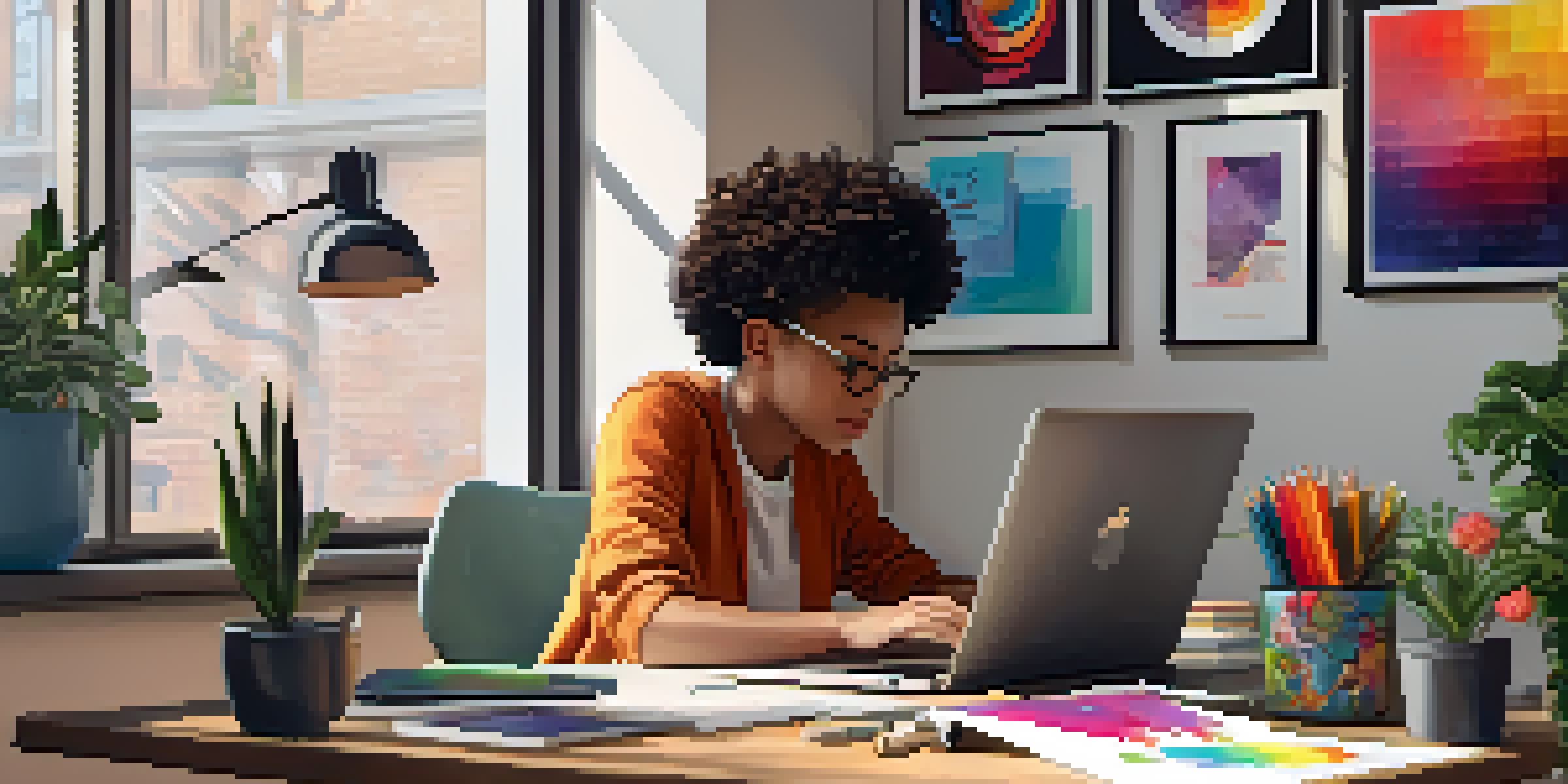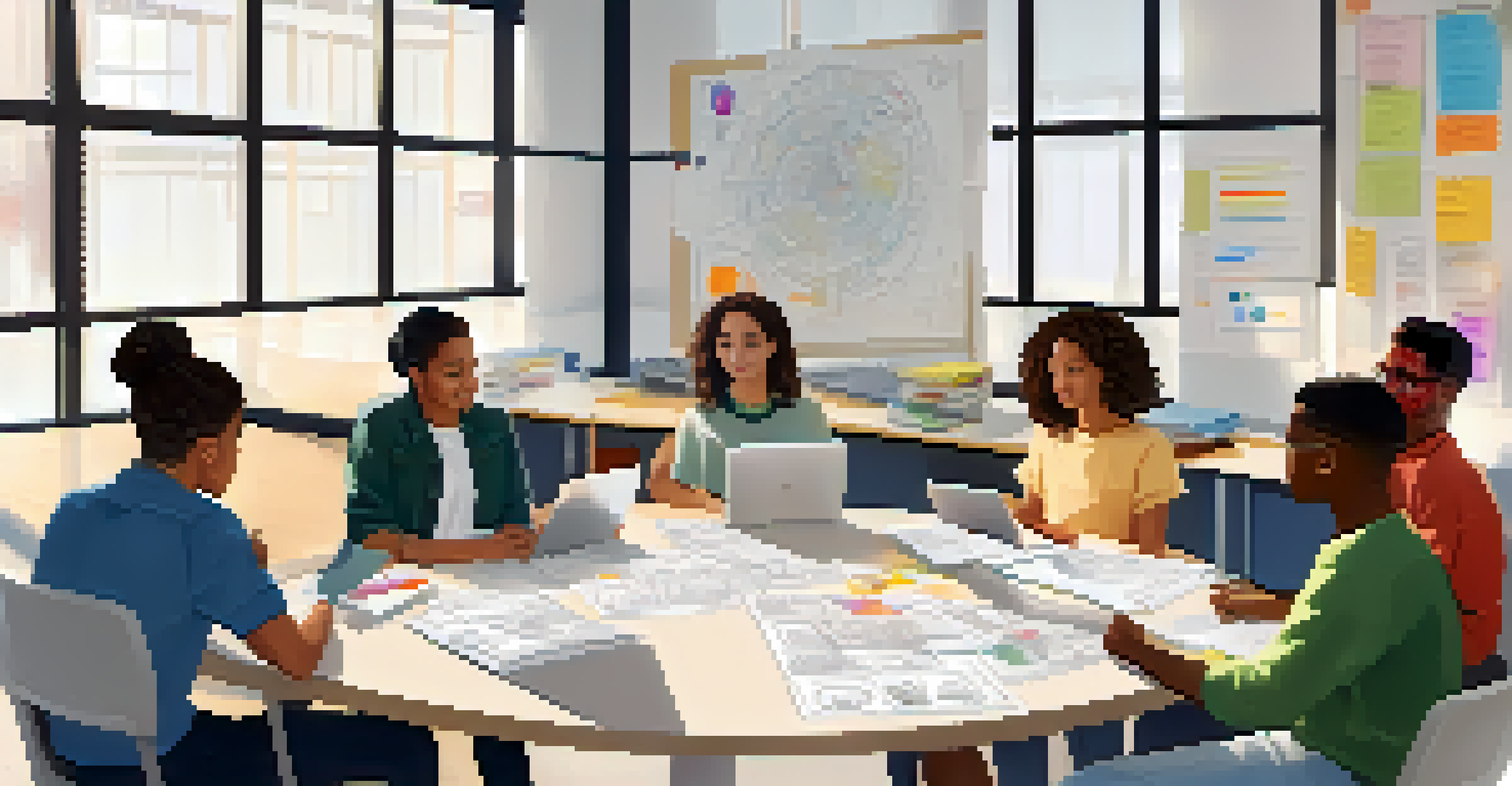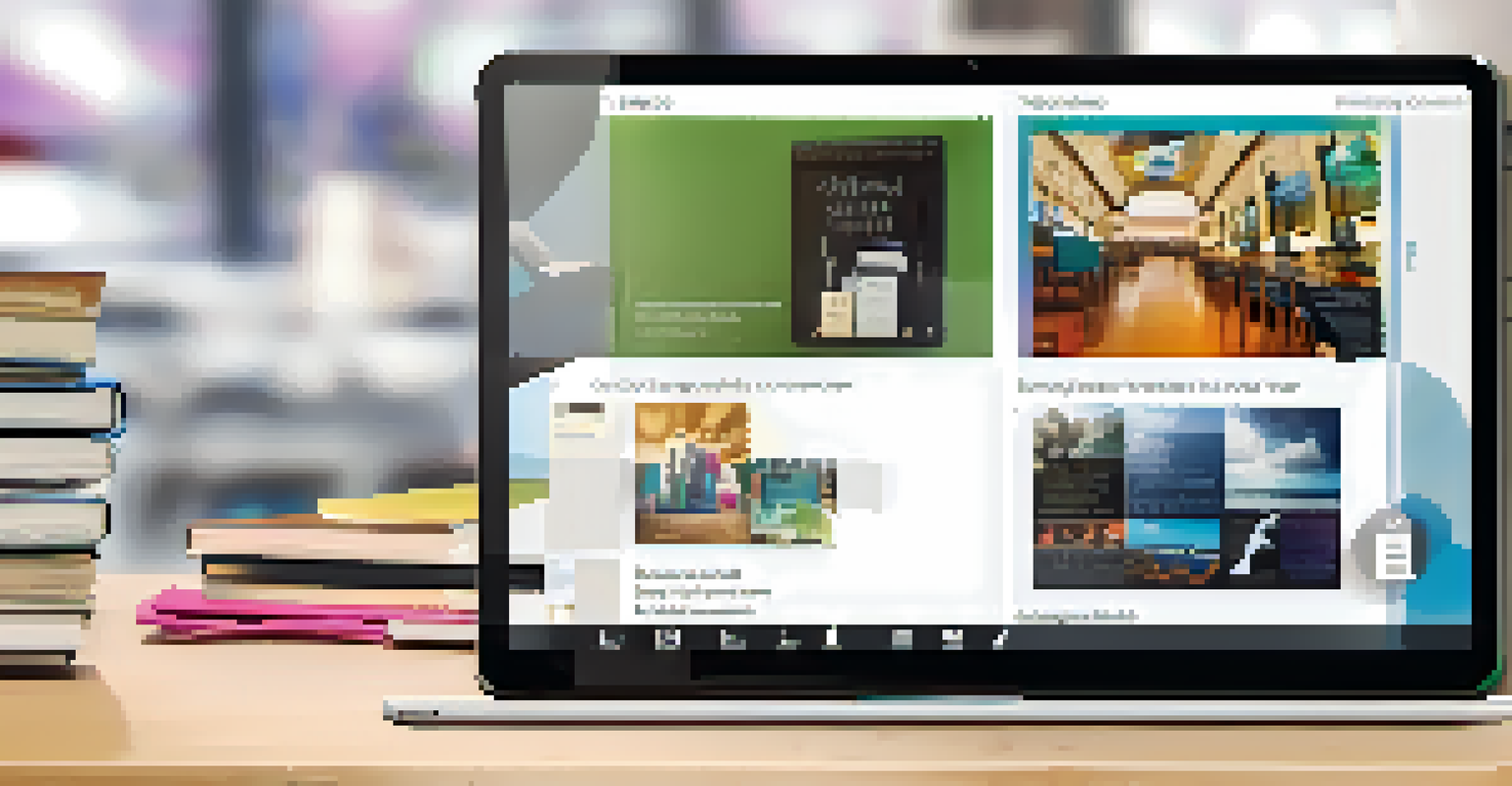Integrating Technology in Student Digital Portfolios

Understanding Digital Portfolios and Their Importance
Digital portfolios are collections of student work that showcase skills, achievements, and growth over time. They serve as a powerful tool for students to reflect on their learning journey and demonstrate their capabilities to future educators or employers. By integrating various forms of multimedia, students can create engaging narratives that highlight their unique experiences and talents.
A portfolio is a living document that reflects your journey, your growth, and your unique identity as a learner.
In today’s digital age, having a well-organized portfolio is crucial. It not only displays a student’s academic accomplishments but also their creativity and critical thinking skills. This is especially important as many employers now expect candidates to present their work in a digital format, making portfolios a vital component of career readiness.
Furthermore, digital portfolios promote self-directed learning. Students are encouraged to take ownership of their educational paths, selecting the projects and pieces they feel best represent their abilities. This process fosters a sense of pride and motivation, as they curate their work and reflect on their progress.
Choosing the Right Technology Tools for Portfolios
Selecting appropriate technology tools is essential for creating effective digital portfolios. Various platforms, such as Google Sites, Padlet, or Wix, offer user-friendly interfaces that allow students to easily upload and organize their work. Understanding the features and functionalities of these tools can help educators guide students in making informed choices that suit their needs.

For instance, some platforms allow for multimedia integration, enabling students to add videos, images, and audio, which can enhance the storytelling aspect of their portfolios. This multimedia capability can make the portfolio more engaging for viewers and provide a richer context for the student’s work. Educators should encourage students to explore different tools to find the one that resonates with them.
Digital Portfolios Enhance Learning
Digital portfolios allow students to showcase their skills and reflect on their educational journey, making them essential for career readiness.
Moreover, it’s essential to consider accessibility and collaboration features. Online tools should be accessible to all students, including those with disabilities. Collaborative features allow peers to give feedback on each other’s portfolios, fostering a sense of community and support among students.
Incorporating Reflection in Digital Portfolios
Reflection is a critical component of any learning process, and digital portfolios provide an excellent platform for students to articulate their thoughts. By incorporating reflective writing, students can analyze their experiences and articulate the skills they have developed throughout their learning journey. This practice not only deepens their understanding but also enhances their communication skills.
The greatest gift you can give yourself is a little bit of your own attention.
Encouraging students to ask questions about their work—such as what they learned, what challenges they faced, and how they overcame them—can lead to meaningful insights. These reflections add depth to their portfolios and show potential educators or employers how the student has grown and adapted over time. It transforms the portfolio from a simple collection of work into a dynamic story of personal development.
Additionally, reflection helps students identify areas for improvement. When they take the time to assess their projects critically, they can set goals for future learning. This ongoing process of reflection and goal-setting can significantly enhance their educational experience and prepare them for lifelong learning.
Engaging Students in the Portfolio Creation Process
Getting students actively involved in the portfolio creation process is vital for its success. Educators can foster engagement by allowing students to personalize their portfolios, choosing which pieces of work to include and how to present them. This autonomy encourages students to invest more in their portfolios, making the process feel more relevant and meaningful.
Group discussions and brainstorming sessions can also spark excitement and creativity. When students collaborate, they can share ideas, techniques, and inspiration, leading to innovative presentations. This collaborative atmosphere not only enhances the quality of the portfolios but also builds camaraderie among students.
Choosing the Right Tools Matters
Selecting user-friendly technology tools is crucial for creating effective digital portfolios that engage students and enhance their storytelling.
Furthermore, incorporating peer feedback into the process can boost confidence and provide constructive criticism. Students can learn from each other’s perspectives and improve their work before final submission. This peer interaction can transform the portfolio creation into an enriching educational experience.
Showcasing Skills Through Digital Portfolios
One of the most significant advantages of digital portfolios is that they allow students to showcase a wide range of skills. Beyond just academic achievements, students can highlight their creativity, leadership, and problem-solving abilities. This holistic view of a student’s capabilities can be particularly appealing to college admissions teams and potential employers.
For example, a student can include a project that demonstrates their ability to work as part of a team, alongside individual projects that showcase critical thinking skills. By presenting a diverse array of skills, students can paint a fuller picture of themselves, making their portfolios stand out in competitive environments.
Moreover, including testimonials from teachers, peers, or community members can add credibility to their claims. These endorsements can enhance the narrative of the portfolio, showing that others recognize the student’s strengths and contributions. This not only boosts the portfolio's impact but also builds the student's confidence.
Maintaining and Updating Digital Portfolios Regularly
A digital portfolio is a living document, meant to evolve over time. Students should be encouraged to update their portfolios regularly, adding new projects and reflections as they progress through their academic journey. Regular maintenance ensures that the portfolio remains relevant and accurately represents the student’s growth and achievements.
Setting aside time for students to review and update their portfolios can also facilitate reflection on what they’ve learned. It allows them to revisit past work with a fresh perspective, evaluating their progress and setting new goals. This practice can instill a habit of continuous improvement and self-assessment.
Regular Updates Ensure Relevance
Maintaining and regularly updating digital portfolios keeps them relevant and accurately reflects a student's growth and achievements over time.
Additionally, as students transition from high school to college or the workforce, having an up-to-date portfolio can make a significant difference. It can serve as a powerful tool during interviews or applications, showcasing their most recent and relevant experiences. Encouraging this ongoing commitment to their portfolios can have lasting benefits.
Evaluating and Assessing Digital Portfolios
Evaluating digital portfolios can be a valuable exercise for both students and educators. Establishing clear criteria for assessment allows students to understand what is expected of them and how their work will be evaluated. This transparency can motivate students to strive for excellence in their portfolios.
Educators can use rubrics that assess various elements, such as content quality, creativity, and reflection. By providing constructive feedback, teachers can guide students toward improvements and help them recognize their strengths. This process not only enhances the portfolio but also contributes to the student’s overall learning experience.

Furthermore, involving students in the assessment process can foster a sense of ownership. By having them reflect on their work and evaluate their progress, students can develop critical self-assessment skills. This practice not only prepares them for future evaluations but also empowers them to take charge of their learning.